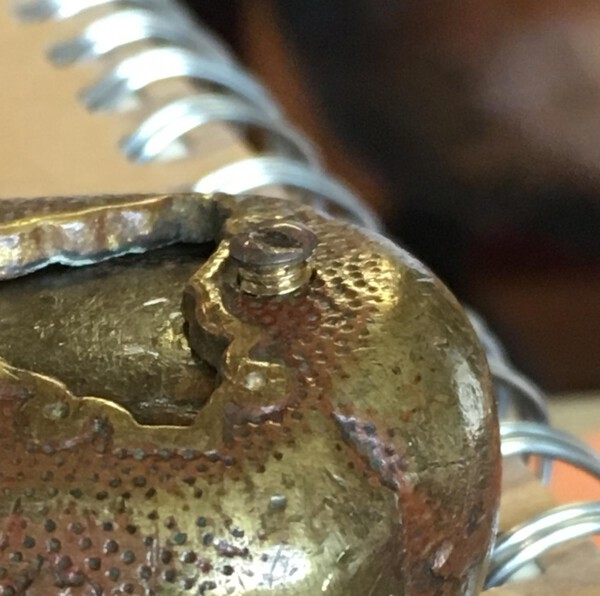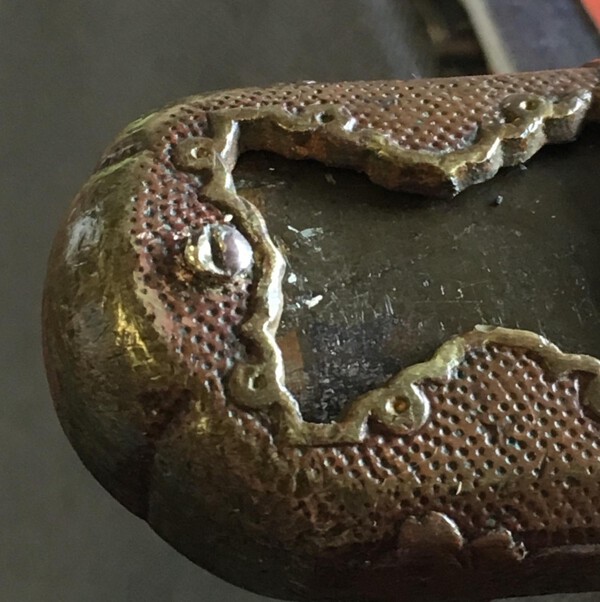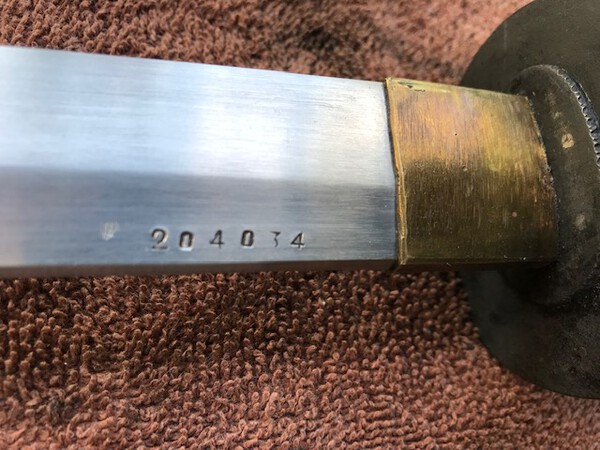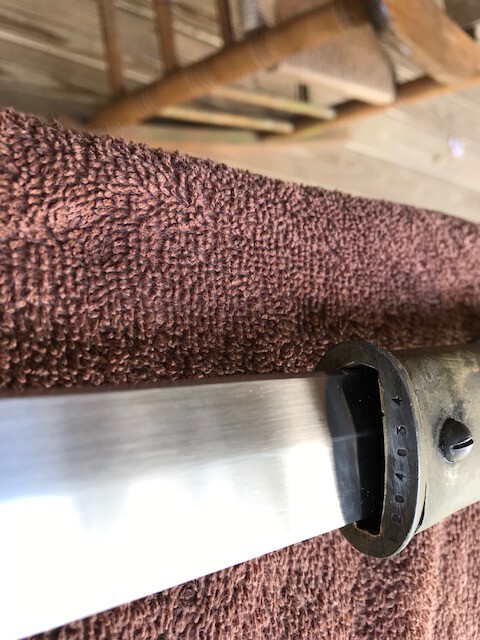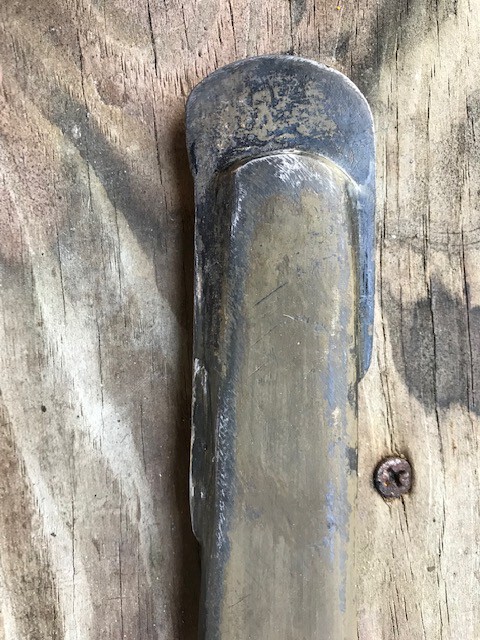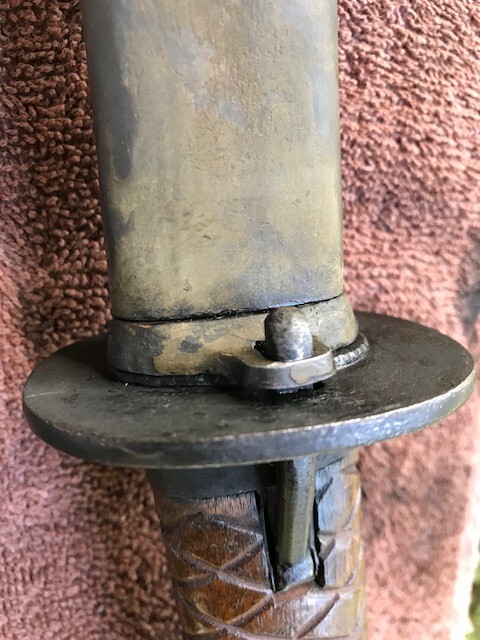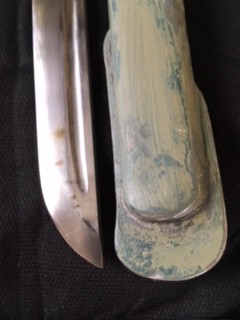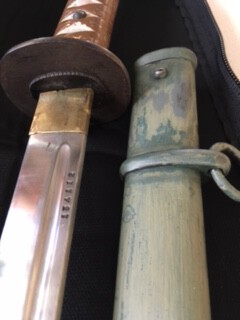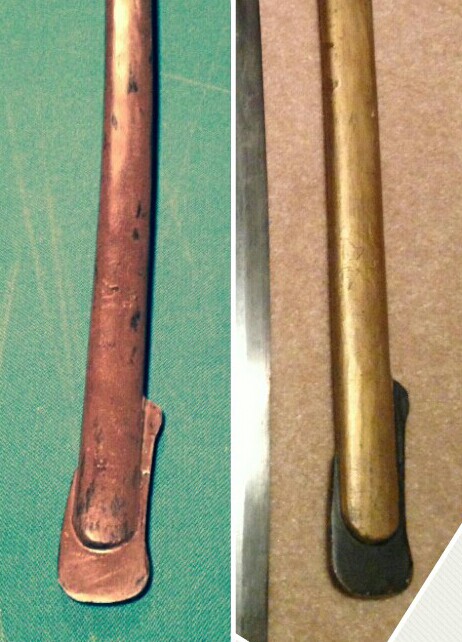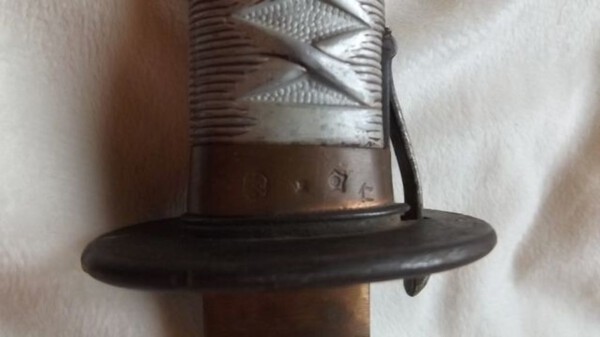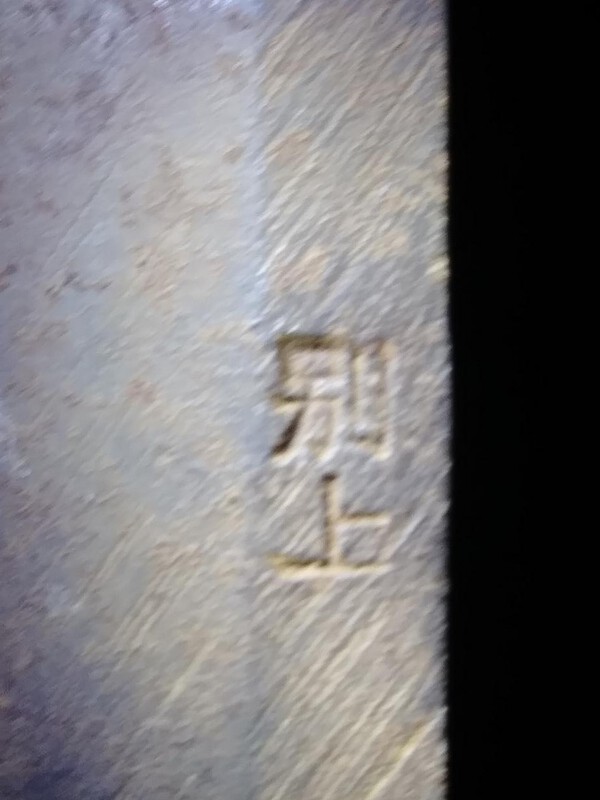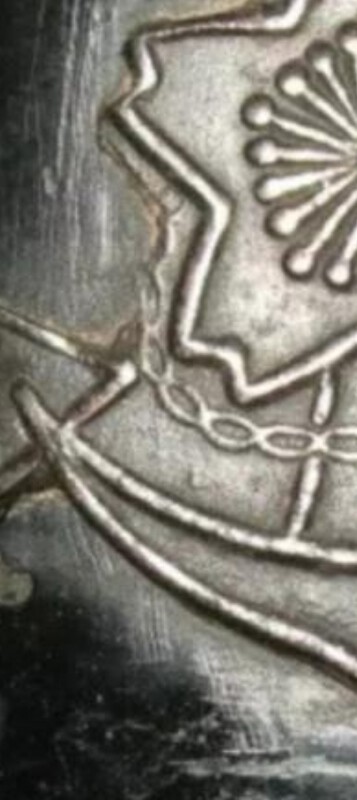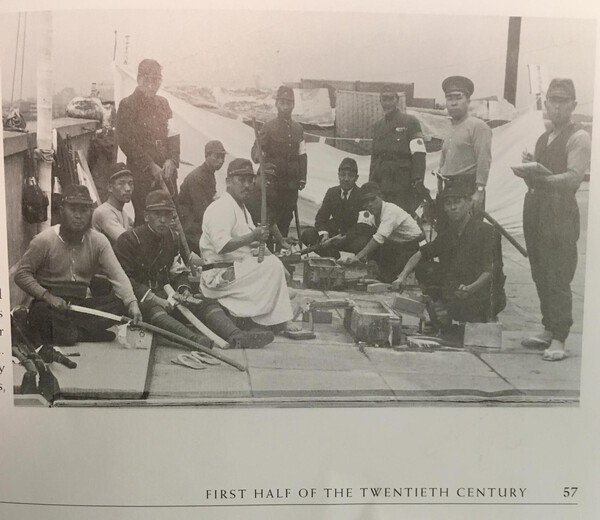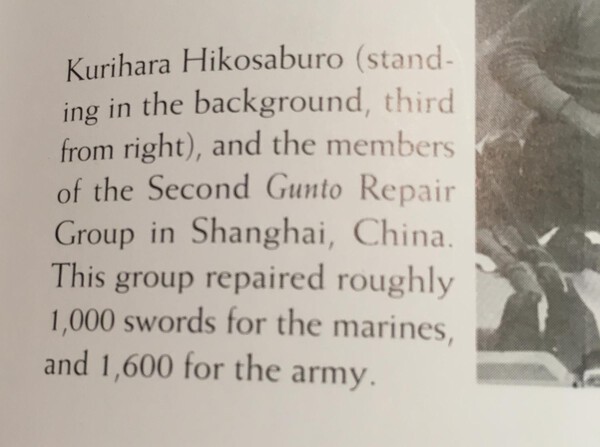-
Posts
13,000 -
Joined
-
Last visited
-
Days Won
155
Content Type
Profiles
Forums
Events
Store
Downloads
Gallery
Everything posted by Bruce Pennington
-
Marzio, I'm really bad at translations but my take is: Yoshimitsu of Bisu https://www.japaneseswordindex.com/oshigata/yoshmits.jpg No date given, but if I'm right, he was a WWII era smith.
-

Help with mei’s on a pair of type 44’s please
Bruce Pennington replied to drb 1643's topic in Translation Assistance
Tom, The real experts will answer for you soon, but I like trying (and am rarely right! though I can read the dates) 1. Toshiharu https://www.japaneseswordindex.com/oshigata/toshharu.jpg dated Mar 1945 2. Kiyotsugu https://www.japaneseswordindex.com/oshigata/kiyotsug.jpg Dated July 1945 -

Prices of NCO swords nowadays
Bruce Pennington replied to Stephen's topic in Military Swords of Japan
Heard a similar comment elsewhere. It does sound like the market has finally peaked and making a correction. -

Prices of NCO swords nowadays
Bruce Pennington replied to Stephen's topic in Military Swords of Japan
More like $750-1,000, as many prices are 10x today what they were in the ‘70s - Chevy camero $3,700; Dad’s house $20,000; gas .25 cents, in ‘70s prices. -
I've come across an old thread about a Kanemitsu blade with a hotstamp. The hotstamp was translated as "Kaneuji registered trade mark". Why would Kanemitsu use a registered trademark of Kaneuji? Are they the same guy? Were they 2 smiths working together? Sorry, but I'm completely illiterate when it comes to smiths and their history.
-

Prices of NCO swords nowadays
Bruce Pennington replied to Stephen's topic in Military Swords of Japan
Ha! I'd swap it for a 1945 Mantetsu! (just kidding, of course! But almost true!) -

Japanese police dirk senior officers?
Bruce Pennington replied to antiquegallery's topic in Military Swords of Japan
Concur, exact example on 191,192 of this updated book. -

2 Gunto screws(poor shape) Free!
Bruce Pennington replied to Logan09's topic in Military Swords of Japan
Logan, One of your screws has found a home on my Dad’s Mantetsu! Good fit. I had to turn it with pliers due to the stripped screwdriver notch, but it worked, thanks! Chuck, PM me with a mailing address and I’ll get the other one to you. You’ll have to use pliers, like I did, as the screwdriver notch on the other one is shot too. -

Mottled Green Paint on Type 95s
Bruce Pennington replied to Bruce Pennington's topic in Military Swords of Japan
Chris, you pic is pretty dark, but it looks like it had a black base-coat with green over it? If so, it adds confimation of the black on all these, with topcoating of green. -

Mottled Green Paint on Type 95s
Bruce Pennington replied to Bruce Pennington's topic in Military Swords of Japan
Steve, Now I REALLY regret stripping my version 3!!! Crap! Looks like it's wartime paint, just don't know who might have done it. It's just so freaking ugly that it's hard to believe a professional did it, yet they are so identical, now all 3, that I can't see it as random soldier DIY jobs. As I recall, on the gold, there was gold colored saya glinting in the sun at the emperor's coronation, but that was in 1926, well before the Type 95 was invented. I don't recall a birthday celebration discussed. Here's the serial number, matching: -
Another collector bought a late war 95 with mottled green paint on the saya with a black-painted drag. Which was a surprise, as the green paint exactly matched the paint job on a version 3 95 I had picked up a couple of years ago. Assuming it to be a really bad Bubba-job, I stripped it down. Luckily, there was original base paint still there. But it bugs me that these two Bubba-jobs are so alike. The other member's saya even shows that the black was laid first and the green overtop. The similarity causes me to wonder if it could have been a wartime laymans job rather than post-war. Also, the paint looks old with lots of wear, gouges, etc on both (the gold paint on my late war didn't look old, nor did the black on the drag). One obvious possibility is that both gunto were, at some time, in the hands of the same Bubba. That seems the most likley answer, but I put this out there for your input. Early in my collecting, I went throught the same issue over gold-painted gunto, after finding at least 6 of them over time. I've since decided they were all post-war (theater groups painted swords for their plays, among other reasons). But the identical-ness of these two made me wonder. {added note:After reviewing this, I realized that all 3 gunto were Nagoya made, Hmmmm....} Thoughts? The late war, owned by another collector: My version 3: My late war, painted gold, but similar black drag:
-
-
It can't be due to rarity, as there doesn't seem to be an end to the 95s available on the market. I'd lean to Steve's angle. As a beginner, the 95s are easier to become knowledgeable about - less tech vocabulary to learn, no smith history, less complexity in art, etc. For a WWII fan they are just as "important" as officer gunto and easier to learn, so maybe the higher prices simply mean there an increasing number of rookie WWII collectors entering the market. {on a personal note, half of my collection of 16 gunto are 95s, but that should make them only equal in price, vs the trend in the market for higher prices}
-
Good catch Logan! A close look at the fuchi also shows they are improving on the blossom and leaf pattern, but still not there yet (fortunately).
-
Ajude (could we get you to go to your settings and put a name; forum rules, but I like talking to a real person), Very nice, yes, Japanese. I'm adding that one to my stamps collection. Do you have a smith name and/or date?
-
-
Yes, an amateur job is an amateur job. One done in the field during the war would be indistinguishable from one done post-war. And inspite of Nick's adamant stand that such non-spec mods wouldn't have been tolerated, we know that non-regulation things were done by troops of all nations, in every war. That's why things like this are just so difficult to know for sure. Steve, I took a re-look at my black saya 95. It's got plenty of scratches in the paint and I just can't tell whether the brown I'm seeing is tarnished steel or original paint. I'm leaning toward tarnished steel. But the quality of the paint job is much poorer than a legit factory job, so I'm leaning to wartime repaint. The one in this post has a similar low-quality look to it as well, with evidence of being painted over an original paint with scratches and dings.
-
These things make me crazy! What bugs me is that the item in question often seems too well crafted to be a fake. Yet, everything you list, and more, cry out "Bubba-job"!!! Look at the file marks that aren't quite covered by the emblem. No self-respecting Japanese koshirae craftsman would leave such ugly detail unfinished.
-
Ok, I found my original source - "Modern Japanese Swords and Swordsmiths, From 1868 to Present", by Leon and Hiroko Kapp, Yoshindo Yoshihara. pgs 56 & 58: They were discussing the attempt to revive interest in swords, in the mid-'30s, by including displays in the annual national art exhibit. "The show was held eight times from then to the end of the war, being cancelled only once (in 1937), because so many smiths and sword craftsmen were sent overseas to battlefields to repair and maintain swords." pg 56 "Kurihara organized a group of sword craftsmen that included smiths, polishers, and koshirae craftsmen, to go to the wartime battlefields to repair swords on the spot. The group was called the Gunto Shuri Genchi Hoshidan (the Voluteer Gunto Repair Group), founded in 1936. Kurihara's original plan called for five to seven smiths in each group. A group was to consist of twenty people and include polishers, tsukamaki (hilt wrapping) craftsmen, and others. Theoretically, each person would work on ten swords a day, but they had to remain at each location far longer than planned and often worked on more than the original quota."
-
Here's a quote from Japaneseswordindex.com, http://japaneseswordindex.com/koa.htm "Japanese-American Courier, Seattle, Washington, June 4, 1938 [Note: This article first appeared in Japan Times.] TOKIO -- Swords are still a prime necessity in war time, despite airplanes, armored tanks, machine guns and repeating rifles. It has been found, and the government has taken special steps, to see that officers have blades which will suit their needs. However, the blades they carry these days are not up to the standards of olden times, according to Hikosaburo Kurihara (see note), expert swordsmith, who recently returned from the Shanghai area, where with a party of smiths he has repaired 15,000 swords for Japanese officers. So great was the need found for this repair work that the master smith has gone to the North China area, where he will attend to the needs of the officers there. Manchurian steel has been found the best material for blades as proved by experience of officers in the Shanghai district, the expert said, and he recommended to the War Ministry that metal of that kind be used in future whenever found available. "We mended about 15,000 swords in Shanghai," the swordsmith said at his home in Hikawacho, Akasaka-ku. "Blades of good steel do not snap easily, as did some of those we found. I recommended to the War Ministry that they make available Manchurian steel to all the swordsmiths in the country. It is about as strong as any we know of." "An officer with a damaged sword, and who expects a battle next day is a pitiful sight. I saw many of them working late at night on their weapons, which may mean life or death to them." (3) [NOTE: Hikosaburo Kurihara was also known as Kurihara Akihide, the founder of the Nihonto Tanren Denshujo (Japanese Sword Forging Institute).]" I know I've read more about the formation of the repair teams somewhere. If I can find it, I'll update.
-

2 Gunto screws(poor shape) Free!
Bruce Pennington replied to Logan09's topic in Military Swords of Japan
It's yours Chuck! -

2 Gunto screws(poor shape) Free!
Bruce Pennington replied to Logan09's topic in Military Swords of Japan
Logan, I'll take both! I need 1, but I'll see which one fits best, then I can mail the remaining one to whomever chimes in second. What do you say? -
With the ashi, it's starting to look like a field repair, maybe. There were gunto repair teams that traveled and made repairs. One team reported repairing 15,000 gunto!
-
Good points Dave! I agree it would not have changed the outcome of the war. And while the sword was not solely responsible for the fighting spirit of the Japanese soldier, it was an inseperable part of the who they were. Many, many an Allied soldier was flabergasted at the tenacity of the Japanese fighting man.





